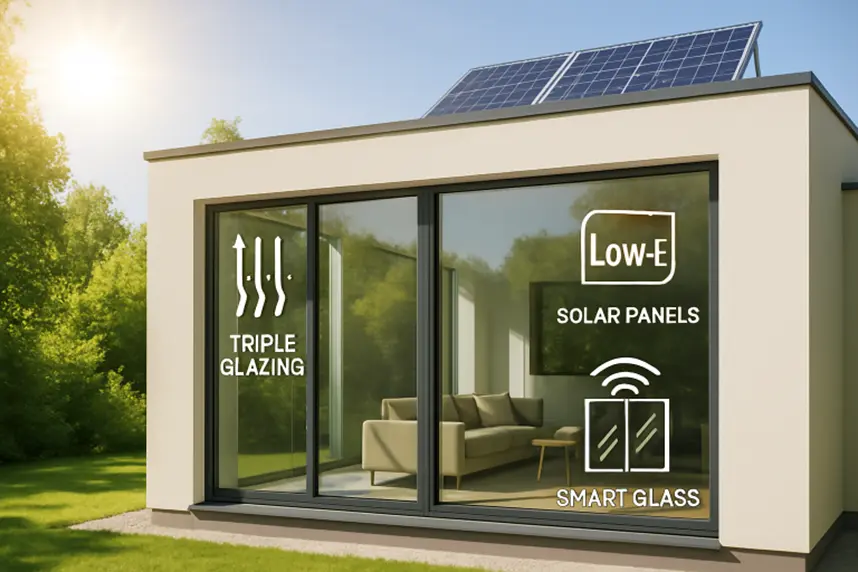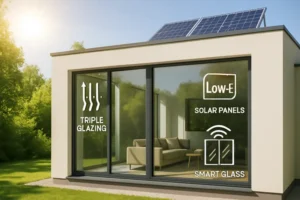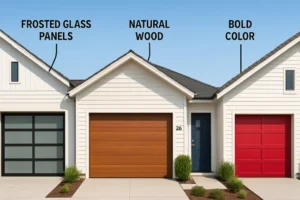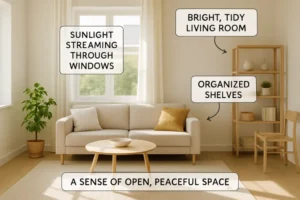As energy-efficient homes become a greater priority, the impact of window technology on heating and cooling costs has never been more important. From innovative glazing options to advanced frame materials, today’s windows are engineered for optimal performance and sustainability. Homeowners now have access to a range of modern solutions that significantly enhance comfort, reduce utility bills, and promote green living. Whether your home needs an upgrade or a complete window glass replacement, understanding recent advancements can make a difference in both energy usage and indoor comfort.
Modern window solutions boost home value and aesthetics while promoting environmental sustainability by reducing energy waste. As the home industry evolves, choosing the right windows is crucial for efficiency. Proper installation can maximize these benefits. Today’s high-performance windows offer energy savings, security, noise reduction, and smart home integration. As technology advances, homeowners gain more control over their environment, addressing rising energy costs and environmental issues. This guide explores key technologies, materials, and installation practices to help you create a smarter, more sustainable home.
Triple Glazing: A Leap in Insulation
Triple-glazed windows offer a significant upgrade over traditional double-glazed windows, featuring three panes of glass separated by an insulating gas, such as argon or krypton. This configuration creates additional barriers against heat transfer, sealing out winter chills and summer heat. As a result, indoor temperatures remain more consistent, reducing the need for constant use of HVAC systems. According to the U.S. Department of Energy, inefficient windows can account for 25% to 30% of residential heating and cooling energy use. Upgrading to triple-glazed units can cut energy expenses dramatically, especially in colder climates.
Low-Emissivity (Low-E) Coatings: Reflecting Efficiency
Low-emissivity (Low-E) coatings are ultra-thin metallic layers applied to glass that reflect infrared and ultraviolet energy while allowing visible light to pass through. This reduces heat transfer, keeping interiors warm in winter and cool in summer. Between 40% and 70% of the solar heat that would otherwise penetrate a home can be blocked with specialized Low-E coatings. This translates to lower energy bills, as HVAC systems don’t need to work as hard. For those seeking daylight without compromising efficiency, Low-E coatings are an ideal solution endorsed by efficiency authorities, such as ENERGY STAR.
Dynamic Tinting: Adaptive Comfort
Dynamic tinting windows, also known as smart glass, use electrochromic or thermochromic technologies to change their opacity in response to sunlight or user controls. These windows can darken during bright daylight to reduce glare and heat gain, then become clear in the evening to let in natural light. Many dynamic windows integrate with smart home systems, allowing for automated or voice-activated adjustments. This adaptability not only enhances comfort but further lowers energy consumption by reducing the need for artificial lighting and air conditioning during peak sun hours.
Integrated Solar Panels: Harnessing the Sun
Another innovative leap in window design is the incorporation of photovoltaic (PV) cells into window glass. These solar windows generate electricity from sunlight, transforming windows from passive daylight collectors to active energy producers. Integrated solar panels can supply energy for basic home needs, lower electricity bills, and position homeowners to take advantage of renewable energy incentives. This dual-purpose functionality further advances sustainability while preserving natural light and unobstructed outdoor views.
Advanced Frame Materials: Strength and Efficiency
The development of advanced frame materials such as uPVC, fiberglass, and thermally broken aluminum has raised new standards for thermal insulation. These low-conductivity frames reduce heat loss, resist weathering, and require less maintenance compared to traditional wood or aluminum frames. They combine strength with minimal thermal transfer, significantly improving the window’s overall U-value. Opting for these cutting-edge frames not only enhances efficiency but also longevity and performance throughout all seasons.
Proper Installation and Maintenance: Ensuring Performance
Installation quality is just as critical as technology when maximizing window energy performance. Even the most advanced windows can fall short of their potential if not properly installed and sealed. Incorrect installation can result in drafts, condensation, and energy loss. It’s crucial to use professional installers experienced in airtight fitting and follow up with ongoing maintenance, such as checking seals, cleaning tracks, and ensuring that hardware functions smoothly. With proper care, modern window solutions can last decades, delivering ongoing energy and comfort benefits.
Conclusion
Investing in modern window solutions is a forward-thinking step for any homeowner seeking improved energy efficiency, enhanced comfort, and greater sustainability. Triple glazing, Low-E coatings, dynamic tinting, integrated solar panels, and advanced frame materials are all technologies redefining home performance. When paired with expert installation and diligent maintenance, these solutions offer substantial long-term savings and a lower carbon footprint, aligning homes with the future of smart, sustainable living.
Also Read
- Creative Ways to Simplify Your Home With Decluttering
- 7 Online Casino Features That Make Gambling More Fun at Home








